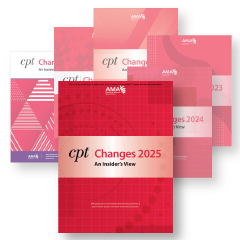UCR Payment Pricing - Fact or Myth
By Chris Woolstenhulme, MBRA, CMRSUsual, customary and reasonable (UCR) fees - do they really exist?
UCR fees are purported to be a tool that provides an accurate fee or payment reference. In most states a non-contracted or Non-Par provider's reimbursement is limited to the “Reasonable Value” of the service provided. The objective is to assign a reasonable value to Medical providers and their services. This is similar to trying to establish an MSRP or manufacturer's suggested retail price for medical services.
An ideal, and potentially the most accurate, set of UCR fee data would be based on actual, listed prices for medical services by providers all around the country - the more providers surveyed the more accurate the UCR data would be. But currently, the public posting of fees or fee schedules is not standard practice for most medical organizations.
Since this ideal UCR data set doesn’t exist, many providers turn to UCR data compiled by public or private organizations from public and/or private claim data.
There are several sources of data used to compile UCR charges, both public and private. An example of a public source is data that comes from Medicare and Medicaid claims that are summarized to provide data on a carrier/contractor or state-level. Private data can include information from claims submitted to other (non-Medicare) payers. In almost all cases the data is aggregated and summarized to ensure that PHI (private/protected health information) is not included.
But before you decide on a particular UCR data set you may want to consider the question, "are UCR fees reliable in the first place?"
The scope of the data and methods used to collect it can vary from UCR vendor to vendor. Methods of fee benchmarking are basically vendor-defined; hence the question: is reliable UCR pricing data Real or a Myth? We do know that UCR data sets exist, but where do they come from and are they accurate? Is accuracy even possible? Or should we just assume they are also an estimate?
The most commonly used public data source on provider fees is administrative data from the Medicare program (CMS). The advantage is the geographic coverage, collecting data for over 48 million enrollees across all 50 states representing well over 1 billion claims annually. Medicare’s database and core data elements include patient demographics, provider type, amounts charged and amounts paid. Having a nationwide pool of data helps ensure the fees are not subject to variance within different localities.
The typical Medicare-based UCR calculation method is to base UCR on a percentage of the Medicare rate. By simply calculating a percentage of the Medicare rate, two or more people using the same data could generate two different rates for the same procedure and geographic area. Also since Medicare rates under the Medicare Fee Schedule are determined administratively, they do not necessarily reflect the true market value. One fee consultant's observation of this situation was that "two-hundred percent of Medicare is 200% of unreasonable!"
Other databases are drawn from a single provider group, solo practices or small number of health insurance plans. This situation would be influenced by the payment policies and this approach to fee benchmarking would be very limited, in addition to being influenced by the payment policies and market dynamics of a small sampling of insurers.
Another way to obtain data is from provider billing records, which has its own set of advantages and disadvantages; in this case, the charge data is regarded as an appropriate basis for fee benchmarking. Where did they get their fees? How were they established in the first place? Their fees could simply represent the contractual arrangements they have with their specific payers.
When choosing a UCR data set for your organization there are several questions you should ask the vendor:
- What data is included?- Where does the data come from?
- How is the data gathered?
- How is the data "cleaned"?
- Is the data valid/appropriate for your purpose?
Even if you work from a data set large enough to support statistically reliable and valid estimates there are still some gray areas; i.e. how those providers compare with the overall market for that procedure in that geographic area.
Perhaps the data collected is from a non-MD provider(s). What thresholds were used for data integrity? (Some charges could have been deemed too high or too low and thus have been eliminated.) Perhaps all the data came from a single provider or payer. Any of these situations could skew the fees in one direction or another.
As the debate over pricing, value and transparency continues, both providers and patients are challenging the fairness of the UCR pricing concept as well as the validity of the underlying data that supports the payment rates.
The decision is yours: is UCR data Fact or Myth?
---
Publish this Article on your Website, Blog or Newsletter
This article is available for publishing on websites, blogs, and newsletters. The article must be published in its entirety - all links must be active. If you would like to publish this article, please contact us and let us know where you will be publishing it. The easiest way to get the text of the article is to highlight and copy. Or use your browser's "View Source" option to capture the HTML formatted code.
If you would like a specific article written on a medical coding and billing topic, please contact us.
contact
62 East 300 North
Spanish Fork, UT 84660
Phone: 801-770-4203 (8-5 Mountain)
Email: info@findacode.com
Thank you for choosing Find-A-Code, please Sign In to remove ads.


 Quick, Current, Complete - www.findacode.com
Quick, Current, Complete - www.findacode.com